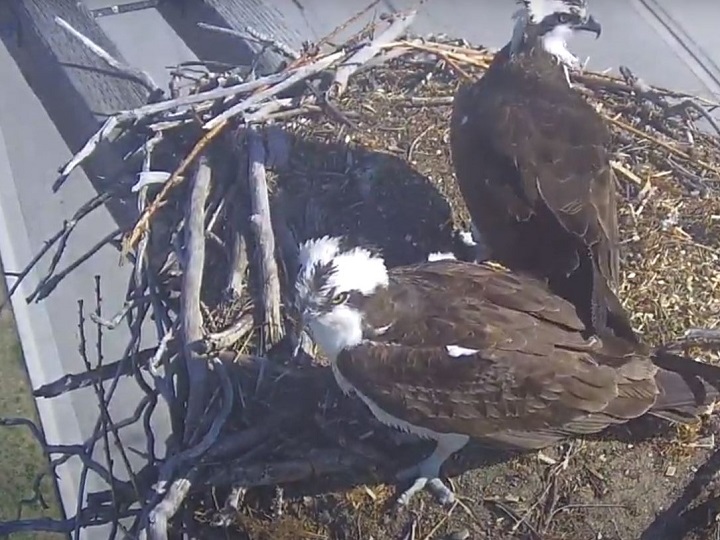Looking for some live, online entertainment?

If you like watching wildlife, the Town of Osoyoos, B.C., is offering front-row seats with its annual osprey cam.
Perched on a nearby pole, the webcam offers live views of a large nest atop a de-energized power pole, and, as of Friday morning, at least two ospreys.
The town says the nest was recently discovered, and that FortisBC crews de-energized the pole for the birds’ safety, noting that electrical service was not impacted.
“FortisBC and the Town of Osoyoos saw an opportunity to use the nest as an educational tool,” the town said in a press release.
“The idea was to set up a camera and stream a live feed of the ospreys. But there was a catch – the team couldn’t install a camera on the power pole. If there were any adjustments to be made, FortisBC power line technicians would be required to ensure they were done safely – creating an inconvenience for everyone involved.”

The town said the solution involved mounting the webcam on a separate pole near the nest. The town said FortisBC also provided funds for the camera equipment.
The camera was turned on Thursday.

Get breaking National news
Quick facts about ospreys, according to the Town of Osoyoos:
- Ospreys resemble bald eagles, but ospreys are smaller.
- Ospreys have white bellies; eagles do not.
- Ospreys have dark bills. Eagles have massive yellow bills and yellow feet.
- Ospreys are also called fish hawks.
- Ospreys are able to dive into the water from a height of up to 40 metres.
- Eagles sometimes steal fish from ospreys, which can be mortally wounded in the process.
- Male ospreys provide most of the food for the family while the mother remains at the nest for much of the summer.
- Ospreys breed in Canada between April and September.
- Ospreys return to the same nest year after year, reinforcing the nest each time.
- Ospreys sometimes build their nests on man-made platforms, on lights above stadiums, on top of signs, or in other high places.
- Ospreys usually have 2-to-4 young in the spring, and the eggs are laid a couple of days apart.
- Their eggs are incubated for about 40 days. Chicks fledge in mid-July when they are about two months old.
- The male and female ospreys take turns sitting on the eggs.
- The main predator of osprey eggs is the raccoon, while great horned owls sometimes kill osprey chicks and adults.
- The adult ospreys use their bodies and their wings to shield their young from the hot sun and harsh weather.
- Both adults care for the young ospreys.
- When they feel the time is right, the parents withhold food and call to the young from nearby to encourage them to fly.
- Adult ospreys have yellow eyes. Young ospreys have red eyes.
- Adult male ospreys and young ospreys have plain white chests.
- Adult female ospreys have a brown pattern on their chests, often called a “necklace.”
- Adult female ospreys are usually bigger than the adult males.
- Ospreys are very protective of their young. They often swoop at perceived threats, including people and cars.
- Ospreys breed commonly in most areas of Canada and the U.S., and migrate up to 8,000 km to South and Central America.
- Ospreys have an average weight of 1.5 to 2.0 kilograms and a wingspan of 1.6 metres.
For more about ospreys, click here and here.
WATCH: Colorado bird-cam (April 2016)








Comments